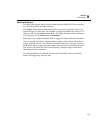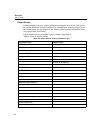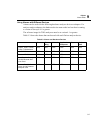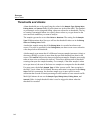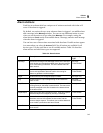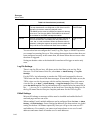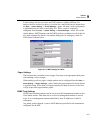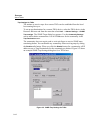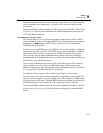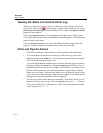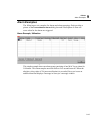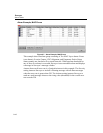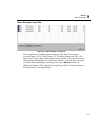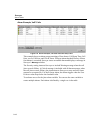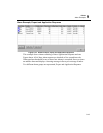
9-13
Alarms
Alarm Actions
9
Multiple IP addresses may be set for each trap. A maximum of 15 trap destinations
can be assigned to each community. All alarms will be sent to all specified trap
destinations.
The traps and MIB variables defined for THGs are defined in SNMPv2. Refer to the
THGs User’s Guide for more information on SNMP management capabilities for
THGs and MIB information.
Trap Settings for Surveyor Hosts
PCs running Surveyor 4.1 or greater that contain Finisar analyzer cards or NDIS
cards can function as hosts for sending SNMP Traps. When an alarm occurs and the
Actions type is SNMP Trap, an SNMP Trap is sent to all the Trap Destinations
configured for the local host.
For Surveyor to send SNMP traps, the SNMP service must be installed, configured,
and started on the Surveyor host. The SNMP service must be installed, configured,
and started locally. Surveyor cannot perform SNMP Trap Setting for a remote
Surveyor host, only set alarms and alarm actions. Refer to Microsoft Windows
documentation for information about how to install, run, and configure SNMP trap
destinations on your Windows system.
Surveyor has six different traps, one for each of the alarm groups. The number of
alarm variable is the same except for Multi-QoS alarms, which contain some
additional information. Each trap contains all the information (Severity, Threshold,
etc.) as specified in the alarm interface for each alarm.
Communities do not require read or read/write privileges to receive traps.
Surveyor does not provide the full functionality of an SNMP extension agent. The
Surveyor extension agent is only for sending traps. MIB variables are defined only
to be sent along with the trap. Although MIB variables are defined as read-only, the
SNMP management station cannot do a GET operation on those variables.
The traps and MIB variables defined for Surveyor are defined in SNMPv1. Refer to
the Surveyoralarms.mib file in your Surveyor directory for complete MIB
details.



